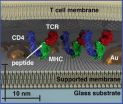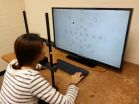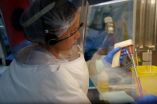(Press-News.org) (SALT LAKE CITY)–A computational tool developed at the University of Utah (U of U) has successfully identified diseases with unknown gene mutations in three separate cases, U of U researchers and their colleagues report in a new study in The American Journal of Human Genetics. The software, Phevor (Phenotype Driven Variant Ontological Re-ranking tool), identifies undiagnosed illnesses and unknown gene mutations by analyzing the exomes, or areas of DNA where proteins that code for genes are made, in individual patients and small families.
Sequencing the genomes of individuals or small families often produces false predictions of mutations that cause diseases. But the study, conducted through the new USTAR Center for Genetic Discovery at the U of U, shows that Phevor's unique approach allows it to identify disease-causing genes more precisely than other computational tools.
Mark Yandell, Ph.D, professor of human genetics, led the research. He was joined by co-authors Martin Reese, Ph.D., of Omicia Inc., an Oakland, Calif., genome interpretation software company, Stephen L. Guthery, M.D., professor of pediatrics who saw two of the cases in clinic, a colleague at the MD Anderson Cancer Center in Houston, and other U of U researchers. Marc V. Singleton, a doctoral student in Yandell's lab, is the first author.
Phevor represents a major advance in personalized health care, according to Lynn B. Jorde, Ph.D., U of U professor and chair of human genetics and also a co-author on the study. As the cost of genome sequencing continues to drop, Jorde expects it to become part of standardized health care within a few years, making diagnostic tools such as Phevor more readily available to clinicians.
"With Phevor, just having the DNA sequence will enable clinicians to identify rare and undiagnosed diseases and disease-causing mutations," Jorde said. "In some cases, they'll be able to make the diagnosis in their own offices."
Phevor works by using algorithms that combine the probabilities of gene mutations being involved in a disease with databases of phenotypes, or the physical manifestation of a disease, and information on gene functions. By combining those factors, Phevor identifies an undiagnosed disease or the most likely candidate gene mutation for causing a disease. It is particularly useful when clinicians want to identify an illness or gene mutation involving a single patient or the patient and two or three other family members, which is the most common clinical situation for undiagnosed diseases.
Yandell, the lead developer of the software, describes Phevor as the application of mathematics to biology. "Phevor is a way to try to get the most out of a child's genome to identify diseases or find disease-causing gene mutations," Yandell said.
The published research cites the case of a 6-month-old infant who was ill with what appeared to be a liver problem, but the child's health care providers couldn't diagnose exactly what was wrong. Phevor solved the mystery by identifying the disease and finding an unknown gene mutation that caused it. In two other cases, Phevor identified unknown gene mutations related to an immunodeficiency disease and autoimmunity disorder in the same way – by sifting through sequenced parts of the genomes of the two young patients and two or three family members.
In one case, Yandell and colleagues used Phevor and another computational tool, VAAST (Variant Annotation, Analysis, Search Tool), to look for the likely mutation in an immunodeficiency syndrome found in three of four members in a family. Blood was taken from each family member, plus an unrelated person who showed the same symptoms as the mother and two children in the family, for DNA sequencing.
VAAST, also developed in Yandell's laboratory, identified a number of mutations that might have caused the syndrome, but couldn't identify an individual candidate as the causative gene. But using the results from VAAST, in combination with Phevor, the Yandell and colleagues identified the one gene that most likely caused the syndrome. Follow-up studies confirmed Phevor's prediction results.
In a similar case with a 12-year-old whose exome was sequenced without any family data, Phevor built on the analysis of VAAST to identify a gene mutation causing the illness, another autoimmune syndrome. In this case, Phevor needed the exome from only the patient to identify the syndrome.
INFORMATION:
The study appeared in the April 3, 2014, edition of the AJHG online.
To listen to Dr. Mark Yandell discuss his work, follow this link to The Scope, University of Utah Health Sciences' radio: Inspired by Jeopardy's "Watson," Using Computer Logic to Diagnose Rare Diseases
About the University of Utah Health Sciences
The University of Utah Health Sciences programs are internationally regarded for their research and clinical expertise in medicine, pharmacy, nursing, and health. Through the School of Medicine and Colleges of Pharmacy, Health, and Nursing, the University of Utah health sciences faculty conduct pioneering research in the genetics of disease, regenerative medicine, drug compounds, cancer, nutrition, and other areas. In addition, the Health Sciences programs also train many Utah physicians, pharmacists, nurses, therapists, and other health care professionals.
Applying math to biology: Software identifies disease-causing mutations in undiagnosed illnesses
2014-04-22
ELSE PRESS RELEASES FROM THIS DATE:
New electric fish genus and species discovered in Brazil's Rio Negro
2014-04-22
AMHERST, Mass. – Scientists at the University of Massachusetts Amherst and the Instituto Nacional de Pesquisas da Amazônia (INPA), Brazil, this week report that they have discovered a new genus and species of electric knifefish in several tributaries of the Negro River in the Amazonia State of Brazil.
Professor Cristina Cox Fernandes at UMass Amherst, with Adília Nogueira and José Antônio Alves-Gomes of INPA, describe the new bluntnose knifefish in the current issue of the journal Proceedings of the Natural Sciences of Philadelphia.
Their paper offers details about ...
Neurotics don't just avoid action: They dislike it
2014-04-22
PHILADELPHIA (April 22, 2014) – That person we all seem to know who we say is neurotic and unable to take action? Turns out he or she isn't unable to act but simply doesn't want to.
A study of nearly 4,000 college students in 19 countries has uncovered new details about why neurotic people may avoid making decisions and moving forward with life. Turns out that when they are asked if action is positive, favorable, good, they just don't like it as much as non-neurotics. Therefore persuasive communications and other interventions may be useful if they simply alter ...
More than two-thirds of Americans support mandated coverage of birth control in health plans
2014-04-22
ANN ARBOR, Mich. — Nearly 7 in 10 Americans support mandated coverage of birth control medications, according to a new national survey by researchers at the University of Michigan Health System.
Women, blacks, Hispanics, parents with children under the age of 18 at home, and adults with private or public insurance were significantly more likely than other adults to support universal coverage of birth control medications, according to the findings that appear in the Journal of the American Medical Association (JAMA).
Individuals from all 50 states and the District of ...
First size-based chromatography technique for the study of livi
2014-04-22
Using nanodot technology, Berkeley Lab researchers have demonstrated the first size-based form of chromatography that can be used to study the membranes of living cells. This unique physical approach to probing cellular membrane structures can reveal information critical to whether a cell lives or dies, remains normal or turns cancerous, that can't be obtained through conventional microscopy.
"We've developed membrane-embedded nanodot array platforms that provide a physical means to both probe and manipulate membrane assemblies, including signaling clusters, while they ...
Scientists alter fat metabolism in animals to prevent most common type of heart disease
2014-04-22
Working with mice and rabbits, Johns Hopkins scientists have found a way to block abnormal cholesterol production, transport and breakdown, successfully preventing the development of atherosclerosis, the main cause of heart attacks and strokes and the number-one cause of death among humans. The condition develops when fat builds inside blood vessels over time and renders them stiff, narrowed and hardened, greatly reducing their ability to feed oxygen-rich blood to the heart muscle and the brain.
In a series of experiments, described April 7 in the journal Circulation, ...
Routine blood glucose measurements can accurately estimate hemoglobin A1c in diabetes
2014-04-22
New Rochelle, NY, April 22, 2014—Hemoglobin A1c is the standard measurement for assessing glycemic control over time in people with diabetes. Blood levels of A1c are typically measured every few months in a laboratory, but now researchers have developed a data-based model that accurately estimates A1c using self-monitored blood glucose (SMBG) readings, as described in Diabetes Technology & Therapeutics (DTT), a peer-reviewed journal from Mary Ann Liebert, Inc., publishers. The article is available free on the DTT website at http://www.liebertpub.com/dtt.
In "Accuracy ...
Study: People pay more attention to the upper half of field of vision
2014-04-22
A new study from North Carolina State University and the University of Toronto finds that people pay more attention to the upper half of their field of vision – a finding which could have ramifications for traffic signs to software interface design.
"Specifically, we tested people's ability to quickly identify a target amidst visual clutter," says Dr. Jing Feng, an assistant professor of psychology at NC State and lead author of a paper on the work. "Basically, we wanted to see where people concentrate their attention at first glance."
Researchers had participants fix ...
Inserm and the Institut Pasteur identify a new variant of Ebola virus in Guinea
2014-04-22
This news release is available in French.
Performed in less than a month, sequencing of the complete genome and subsequent phylogenetic analysis show that the virus present in Guinea forms a clade (variant) that is distinct from strains previously identified in the Democratic Republic of Congo and in Gabon. Epidemiological investigations also linked the laboratory confirmed cases with the initial deaths recorded during the December 2013 outbreak.
Ebola virus is a lethal, highly contagious virus for which there is presently no treatment. The symptoms are somewhat ...
How the body fights against viruses
2014-04-22
This news release is available in German. Scientists of the Max F. Perutz Laboratories of the University of Vienna and the Medical University of Vienna, together with colleagues of the ETH Zurich, have now shown how double stranded RNA, such as viral genetic information, is prevented from entering the nucleus of a cell. During the immune response against viral infection, the protein ADAR1 moves from the cell nucleus into the surrounding cytoplasm. There it modifies viral RNA to inhibit reproduction of the virus. But how is the human genome protected from inadvertent ...
What gave us the advantage over extinct types of humans?
2014-04-22
Jerusalem, April 22, 2014 -- In parallel with modern man (Homo sapiens), there were other, extinct types of humans with whom we lived side by side, such as Neanderthals and the recently discovered Denisovans of Siberia. Yet only Homo sapiens survived. What was it in our genetic makeup that gave us the advantage?
The truth is that little is known about our unique genetic makeup as distinguished from our archaic cousins, and how it contributed to the fact that we are the only species among them
to survive. Even less is known about our unique epigenetic makeup, but it ...







